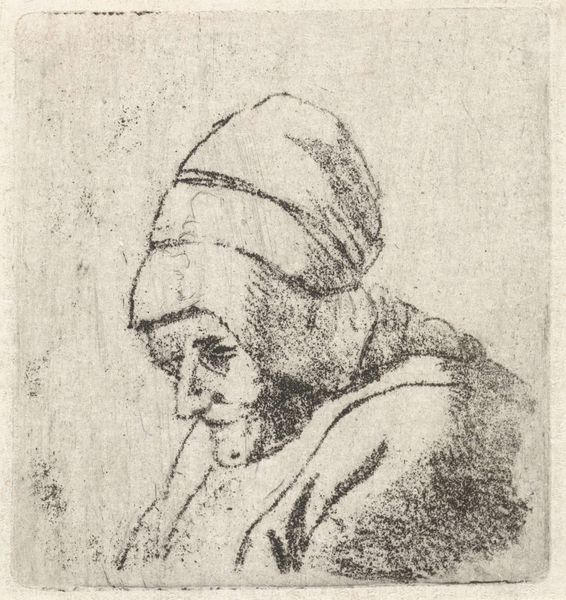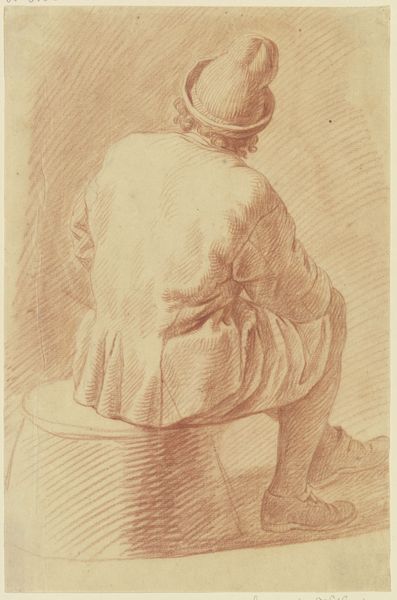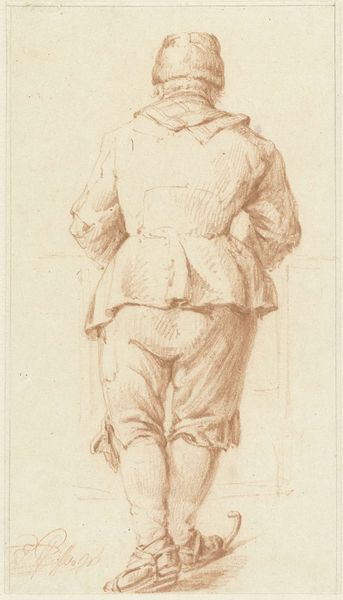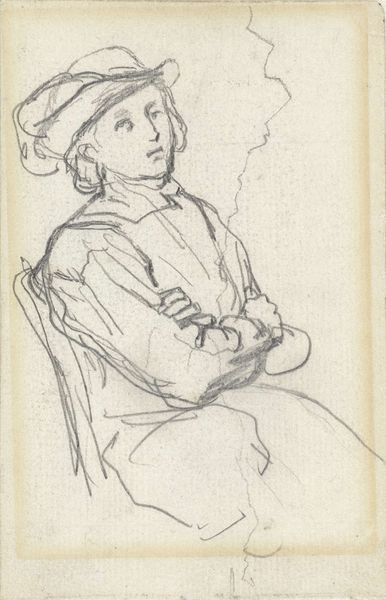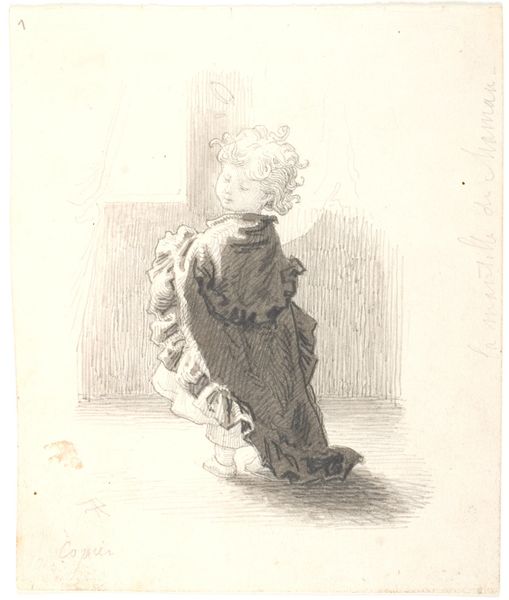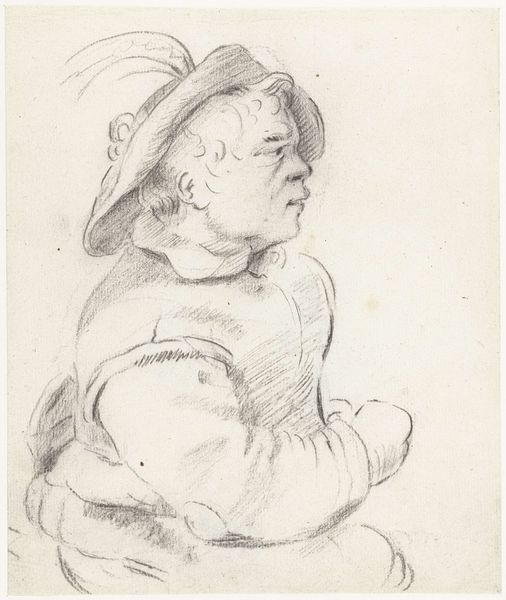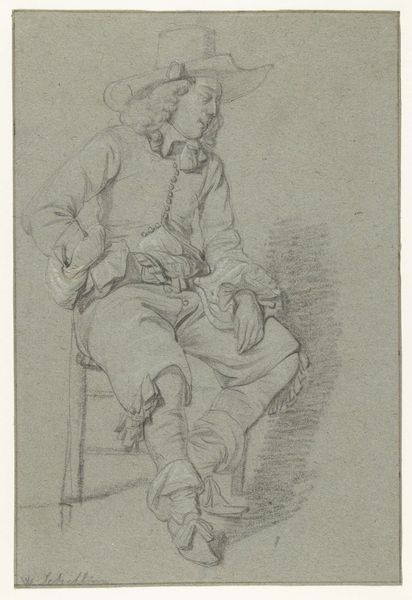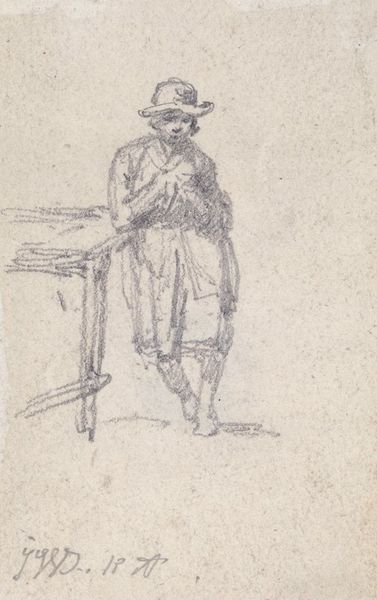
drawing, print, etching
#
portrait
#
drawing
#
quirky sketch
# print
#
etching
#
pencil sketch
#
figuration
#
personal sketchbook
#
idea generation sketch
#
sketchwork
#
pen-ink sketch
#
sketchbook drawing
#
genre-painting
#
storyboard and sketchbook work
#
sketchbook art
#
initial sketch
Dimensions: height 90 mm, width 60 mm
Copyright: Rijks Museum: Open Domain
Louis Bernard Coclers created this etching, "Kind met valhoed," sometime in the late 18th century. At first glance, it’s a simple portrait of a child in a rather peculiar hat. But let’s consider the period. Coclers was working in the Netherlands during a time of significant social stratification. Note the child's elaborate headwear, which hints at a certain level of comfort and belonging to a particular social stratum. The image creates meaning through these visual codes. What was the public role of art at the time? The Dutch Republic had a booming art market, but how did class play into this? How did the institutions of art, such as guilds, affect who got to make art and who was represented in it? Delving into sources like period newspapers and guild records would give us a better understanding of the social conditions that shaped Coclers' artistic production. Only then will we be able to reflect on the meaning of art as something that is contingent on its social and institutional context.
Comments
No comments
Be the first to comment and join the conversation on the ultimate creative platform.

